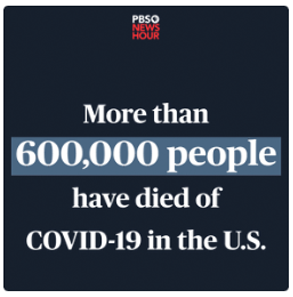Health Plan Weekly
-
MA Startup Hits Back at Damning Report as SEC Investigates
The tech-focused Medicare Advantage startup Clover Health — which should be riding high after its recent stock market debut — is instead being probed by the Securities and Exchange Commission and is facing a shareholder lawsuit amid allegations it misled investors by failing to publicly disclose that it was being investigated by the Dept. of Justice.
While the company has denied the allegations via a lengthy, public rebuttal, securities law experts tell AIS Health that Clover could face liability if it did actually conceal material information from investors — a fact that hasn’t yet been determined.

-
News Briefs
✦ UnitedHealth Group will make Optum CEO Andrew Witty its next CEO, succeeding retiring CEO David Wichmann, who has held the top job since 2017. Witty has run UnitedHealth’s PBM, hospital, finance and data analytics subsidiary since 2018, and previously served as CEO of pharmaceutical manufacturer GlaxoSmithKline plc from 2008 to 2017. During the COVID-19 pandemic, Witty “took an unpaid leave of absence from his company positions to serve as a Global Envoy for the World Health Organization’s COVID-19 efforts” and “served as an advisor to the UK Government Vaccine Taskforce,” according to a press release. Dirk McMahon will become the company’s new president and chief operating officer. Read more at http://bit.ly/3oPigeW.
✦ President Joe Biden on Feb. 2 signed an executive order on immigration that called for a review of the Trump administration’s so-called “public charge rule.” The rule allowed immigration officials to consider use of Medicaid coverage and other non-cash benefits in reviewing applications for legal residence. Although the regulation was tied up in litigation before its February 2020 implementation, research showed it still caused enough confusion and fear among immigrants to prevent them from enrolling in Medicaid. Estimates of the potential negative impact of the public charge rule on Medicaid enrollment range from about 1 million to more than 4 million, wrote Evercore ISI analyst Michael Newshel on Feb. 2. “The Biden administration has been expected to rescind the rule, which is positive for Medicaid MCOs and also hospitals.” Read the order at http://bit.ly/3pQagvw.

-
Experts Call on Congress To Boost Medicaid Funding
Democratic majorities in Congress and the Biden administration can move quickly to bolster Medicaid and expand enrollment in the safety net program, according to a Feb. 3 expert panel convened by the Brookings Institution. The panelists, which included policy experts, state health officials, and former CMS Deputy Administrator Vikki Wachino, observed that Medicaid can play a critical role in blunting the impact of the COVID-19 pandemic on communities of color and preserving states’ finances.
Medicaid’s safety-net role is more important than ever during the COVID-19 crisis. The pandemic’s economic devastation has caused sudden, unprecedented growth in Medicaid enrollment — up 8.6% to a total of 77.3 million nationally between February 2020 and September 2020, according to a Jan. 21 report by the Kaiser Family Foundation — as well as losses in commercial insurance coverage.

-
Nearly 9 Million People Could Benefit From Broadened ACA Enrollment Period
by Jinghong Chen
President Joe Biden on Jan. 28 signed an executive order to reopen the federal health exchange from Feb.15 through May 15. During that special enrollment period, 4 million uninsured people will be eligible for a zero-premium bronze plan on HealthCare.gov, and another 4.9 million could get subsidies to cover part of a health plan, according to a recent analysis by the Kaiser Family Foundation. Compared to the general non-elderly population, these subsidy-eligible uninsured individuals are more likely to be young adults, high-school educated and working in industries such as construction, arts, entertainment and recreation. Approximately 8.3 million people selected or were automatically reenrolled in health plans for 2021 on HealthCare.gov as of the Dec. 15 deadline, according to CMS.

-
Cigna, Humana See COVID Costs Creep Up in Fourth Quarter
Although the COVID-19 pandemic has had a largely positive impact on health insurers’ bottom lines — given the sheer magnitude of deferred routine and elective care — two publicly traded payers’ recent fourth-quarter earnings results show that they are not immune from the myriad costs associated with the case surge that occurred in the fall and winter of 2020.
Cigna Corp., which reported its fourth-quarter and full-year 2020 financial results on Feb. 4, posted an adjusted earnings per share (EPS) of $3.51, missing the consensus Wall Street estimate of $3.68 because of “higher COVID cost in the quarter,” as Citi analyst Ralph Giacobbe put it. Most of that pressure was felt in the company’s U.S. Medical segment — which houses its commercial and government-sponsored insurance businesses — as fourth-quarter adjusted income from operations and adjusted margins both declined year over year due to COVID-19 and the one year-return of the health insurance fee.












